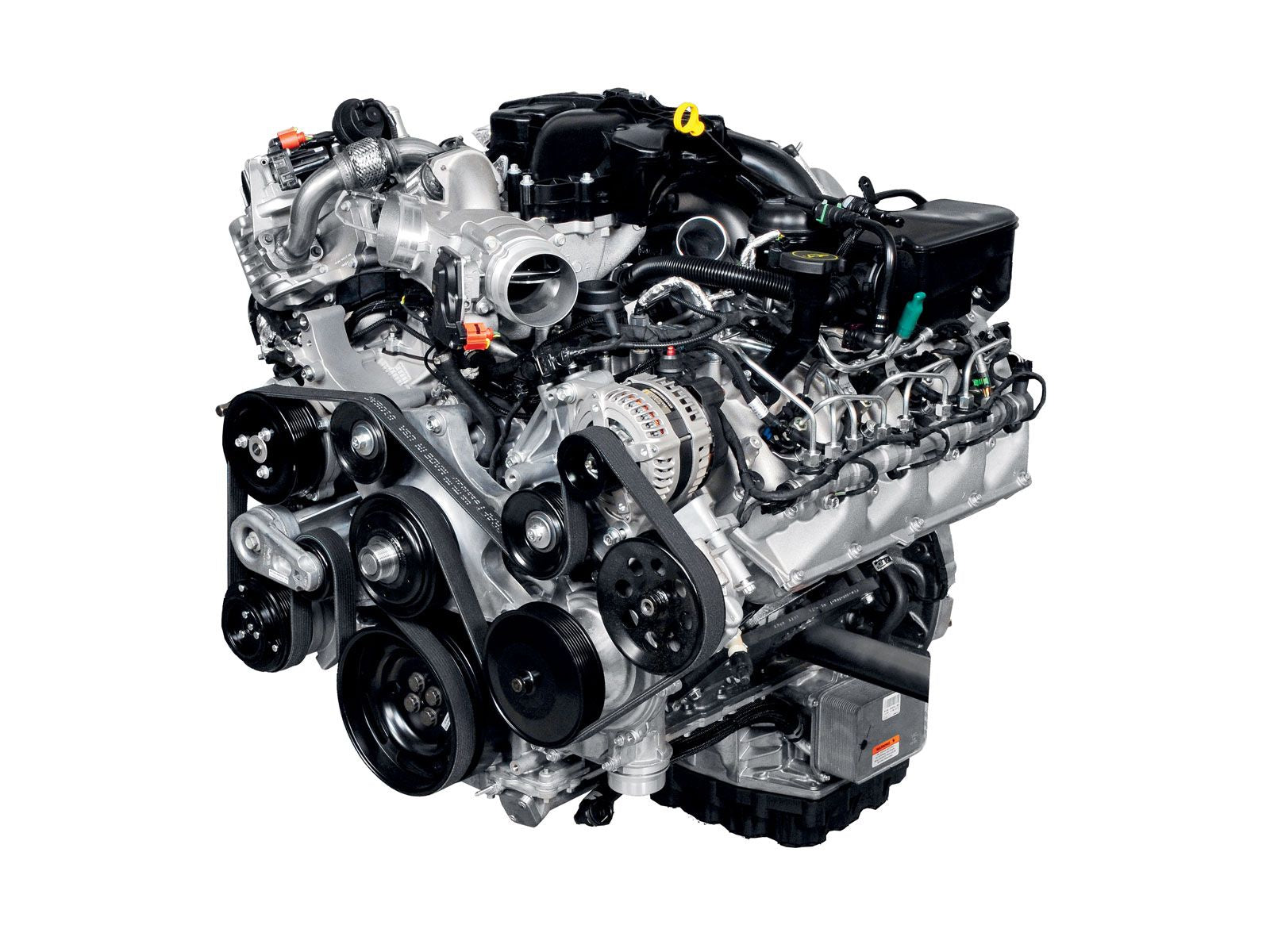Your Cart is Empty
FREE SHIPPING TO USA!*exclusions apply
FREE SHIPPING TO USA!*exclusions apply
The 6.7L Powerstroke was introduced in 2011. Pre-release it was nicknamed "The Scorpion". It's rumored that its nickname was due to the unique turbocharger location and intake/exhaust arrangement. This was the first diesel engine built in-house by Ford, still keeping the Powerstroke badging. This engine came with a lot of changes, many of which prove that Ford learned from past International engines and was out to create the best engine possible. This was no small feat as they were required to meet tougher emissions standards while meeting the customer’s exceptions of higher horsepower and torque over a wider RPM range.
Previously, the V8 engine configuration had the intake system mounted in the valley between the banks with the exhaust on the outside. The Scorpion was a whole new beast. The 6.7 featured newly designed reverse flow heads. The 6.7 Powerstroke is the first light-duty diesel engine to be produced with the exhaust exiting towards the engine valley (where the turbocharger is located) and the boosted air enters the outside of the cylinder heads. This decreases heat in the engine compartment and more importantly drastically reduces turbo lag thus creating a more responsive engine.
In addition to the intake changes, Ford also opted to move away from the heavy cast iron block, seen in previous engines and opted to use a new material, compacted graphite iron (CGI). This was one of the first CGI diesels. The change decreased the weight which resulted in an increased payload and better fuel economy. Compacted graphite iron also helped reduce noise, vibration, and harshness.
Another weight reducing component was the new aluminum cylinder heads featuring 4 valves & 6 head bolts per cylinder. These reverse flow heads (as mentioned above) reduced exhaust volume thus decreasing turbo lag. The efficiency of the head design allows for a more responsive engine. Additionally, the increased clamping force of the additional head bolts has proven to decrease head gasket failures.
In the upper engine, each valve has its own rocker arm and push rod. Unlike the 6.0L they are not attached by head bolts, instead, they have their own common fulcrum and attach to the cylinder head. Unlike floating bridges, individual rocker arms reduce side loading and decrease wear on the push rods and valves. These simple, stamped rocker arms were designed for quality and reliability. The rocker arm oiling manifold also assists in cooling and lubricating valves and rocker arms.
As far as lower engine/bottom end internals, Ford designed powder metal fracture cap connecting rods with an end cap that is rotated 45 degrees to increase strength although high horsepower applications (650+) have proven that the connecting rods are a weak point in these engines for aftermarket applications. The engine features 5 main bearing caps with 6 bolts per cap. The 6.7 Powerstroke also has a forged modular steel crankshaft. The improved crankshaft also features a fillet radius on each journal as well as a one piece rear flange which increases torque capabilities.
The 6.7 Powerstroke also features Teflon skirted pistons, a Mahle collaboration, with oil cooling jets for lower oil temperatures. The oil is squirted into the bottom of the piston where it travels within the piston cavity thus cooling the top of the piston.
In mid-2016, Ford introduced their “big pin” wrist pins & pistons. It has also been rumored that Ford redesigned the heads to flow better and while there is a new part number, the casting number remains the same. No other engine modifications have been made from 11-present with the exception of those mentioned above.

I’ve got a 2017 F250 Lariat with the 6.7
All stock, it’s taken care of me
150,500 right now it gets between 18.4 and 16.8 on average. I’m in NC live in the middle
Filled up and drive to the outer banks next fill up I was at 19 something I guess the flat part of the trip helped out a whole lot
with the newer DEF and DPF emissions parts on these trucks, (2019 f250 6.7powerstroke) , i don’t know much about diesel, How would these trucks do as a daily driver/short trip truck, (no deletes) no towing or hauling, 6 miles to work and 6 miles back home during the work week? and 30 to 40 miles on the highway on the weekends. i just want a big truck with a diesel engine. P.S i don’t care about the mpg or the cost of diesel fuel.
Just bought 2019 250 6.7diesel . Thought i would check out 6.7 do and dont’s.
Comments will be approved before showing up.

Ray Graham
September 05, 2022
I have a 2019 F350 with 267,000 miles on it. I’ve put a few SPE changes yon my truck. Hot and cold pipes. Couple of other things. My last F350 was a 2015 also had several SPE mods on it. I sold it with 398, 000 miles on it and it ran excellent. Regular maintenance and good parts and upgrades keep it popping! No need to look for another engine. I have the best!